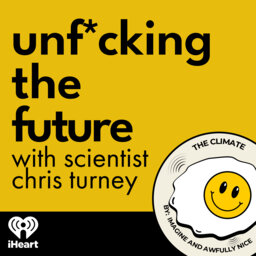Wildfires with Glynis Humphrey
For decades, Western governments have pursued policies of fire suppression. But researchers like Glynis Humphrey have shown that these methods don't work – especially as global heating worsens wildfire risks. Today, Glynis joins the show to talk about wildfire management, and what we can learn from the traditional practices of Indigenous communities around the world. Show notes from Chris:
- Glynis is an author of an excellent but sobering United Nation’s report on how wildfires are becoming more intense and frequent. You can download “Spreading like Wildfire: The Rising Threat of Extraordinary Landscape Fires” for free. But this report also gives hope: Indigenous and traditional knowledge can help prevent and reduce the impact of wildfires in a hotter world.
- There are some heartbreaking (and compassionate) movies on wildfires. Rebuilding Paradise (2020) directed by Ron Howard and Fire Front (2022) directed by Eddie Martin are powerful documentaries that capture the devastating impacts of wildfires and the terrific importance of community.
- If you want to find out how best to plan for and respond to wildfires, there are a wealth of resources online. Some excellent examples are the New South Wales Rural Fire Service (the NSW RFS for short) and the California Department of Forestry and Fire Protection (aka CAL FIRE). These websites are packed with life-saving information.
- For those wanting to learn more about the Australian “dinosaur trees”, the Wollemi Pine, there is an excellent recent article by the ABC. You can see how close the fires of 2019-2020 came to destroying these amazing trees by clicking here. The movie in this article has extraordinary footage.
 Unf*cking the Future
Unf*cking the Future


